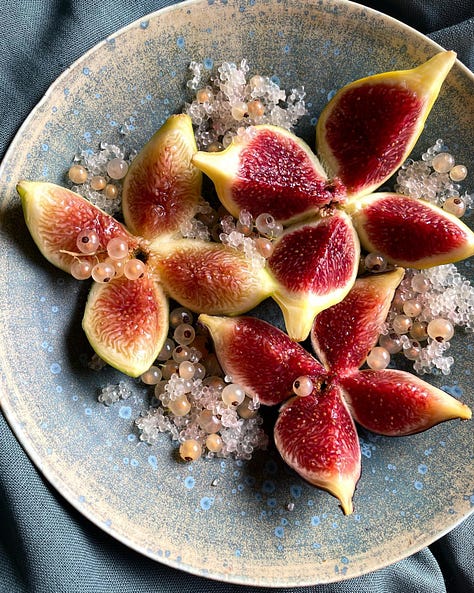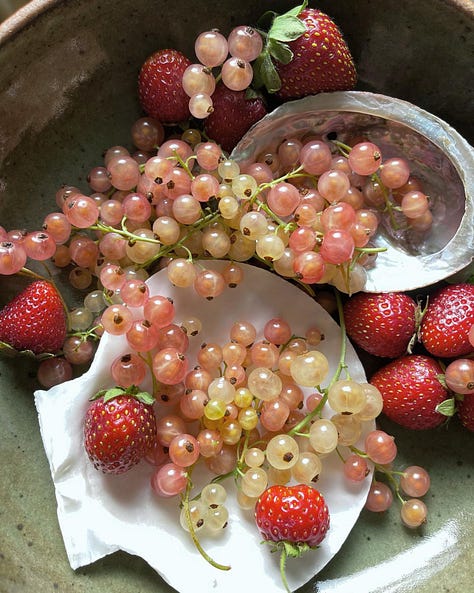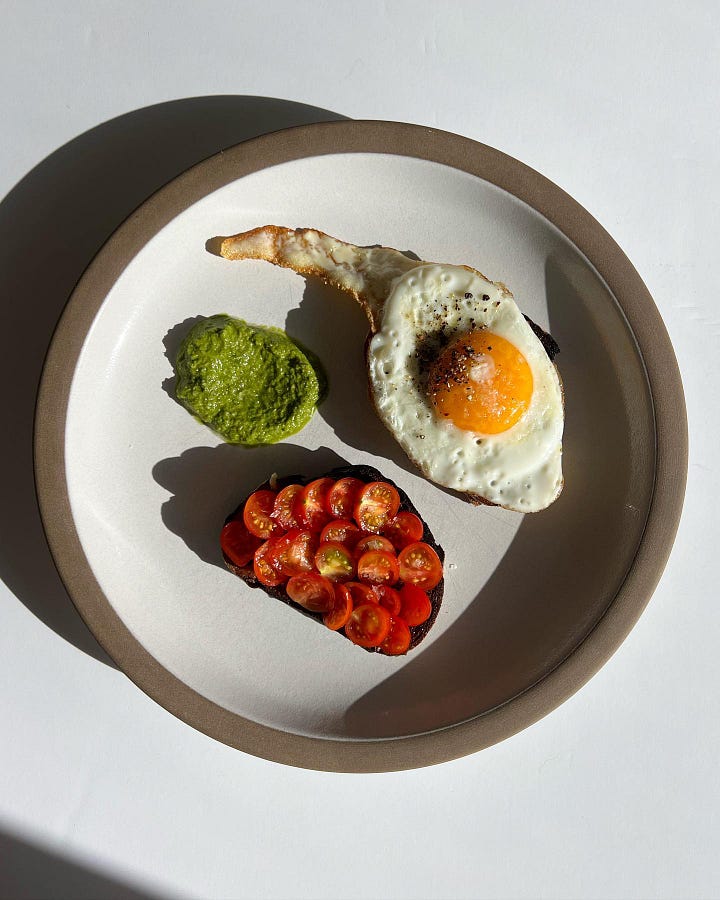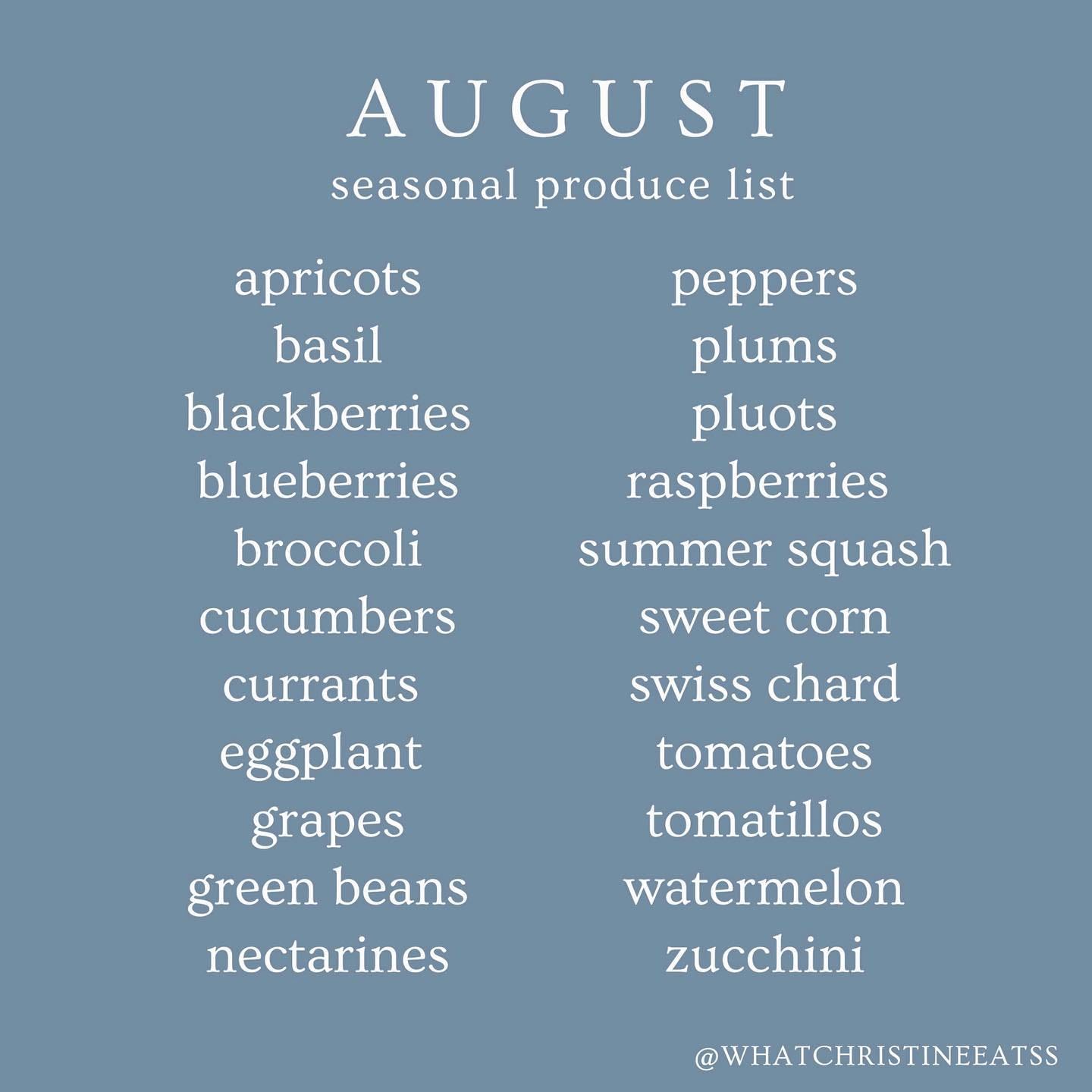There’s something reassuring about recurring events — an implicit comfort that accompanies their arrival just as expected and right on time.
It’s my relief on the first morning of every month when @whatchristineeatss posts her seasonal produce list, and I know all is right in the world.
I’ll start brainstorming seasonal riffs to recipes I’ve made before. I’ll take a mental note of what to prioritize at the farmers market and what to look out for on restaurant menus.
But there are usually 2-3 items on her list that I want to learn more about. It might be something I’ve never heard of before let alone tried (fiddleheads from May, amirite?!) Or it may be something I definitely recognize but don’t really know.
Take August’s currants, for example. I’d say we’re not really friends, we’re acquaintances… But I’ve also seen her at enough parties that I feel like we’d probably get along?



So after a little self-guided research and experimentation, I am very pleased to introduce you to my new friends: currants, pluots and tomatillos.
I’ll tell you what they are, what they taste like, and what you can* do with them. (*The beauty of in-season produce is that it can usually be enjoyed on its own, so consider these but humble suggestions if you want to zhuzh them up a bit. Or subtle flex at your next dinner party with something a little unexpected.)
Let me know if you find this interesting / fun / helpful, and I’ll add more photo documentation to the next ‘tis the season. We are a work in progress.


Currants
By way of introduction:
Currants (pronounced kur-uhnts) look like pearlescent orbs that you’ll find in red, white or black. Fun fact: the US government banned these bad boys in 1911 because they supposedly hosted a disease that killed pine trees. While the federal ban was lifted in 1966 and yielded to state-by-state discretion, New York didn’t waive the ban until 2003. All to say if you’ve never tried these before, you’re certainly not alone.
Tasting notes:
Currants are more tart than they are sweet, but they’re not too mouth-puckering to eat on their own. Martha says black currants are “sour but also complex, with a trace of tannins,” so they can be used to make sauces that would pair nicely with duck, pork, and venison. They’re also commonly turned into crème de cassis, a blackcurrant liqueur which this new Hudson Valley brand, C. Cassis, is making me want to try…
Red currants are slightly more tart and acidic than white currants, but they share a similar taste profile that makes them great for jams and jellies.
What I made:
I’ve never been a fan of super sweet desserts, so I thought I’d try using the tartness of my red currants to brighten up these financiers in taste and color. I just used a fork to de-stem the currants and sprinkled a few on the top of each mini cake before popping in the oven. So easy and bite-sized, and with some confectioners sugar on top, they look très chic.
Other recipes I want to try:
Mine came out a bit dry, but I definitely overcooked them so who’s to say? I am, however, intrigued by these red currant yogurt cakes and hope, with the added moisture, they’d be giving more dessert than afternoon tea cake?
But also know that you can just throw some currants on a cheese plate with figs or other berries and call it a day.
Tomatillos
By way of introduction:
Tomatillos (pronounced toe-mah-TEE-yos) are small and visibly tomato-esque fruits, but they are brighter and acidic in flavor. They’re also dense rather than watery (so eggplant-esque), and they have a papery husk that is about as satisfying to remove in a single peel as the protective film on a new iphone screen. There will be a slightly sticky residue underneath, so just give your ‘tillos a quick rinse before you prep them.
For picking out the best of the bunch, know that tomatillos are at their peak when they take on a deep green hue, and the husks start to slightly crack open on their own.
Tasting notes:
Tomatillos are common to Mexican cuisine and are perhaps most often associated with salsa verde. You can either eat them raw (when they’ll be crunchy and slightly acidic) or cooked (when they’ll be slightly milder and sweeter in flavor).
What I made:
One blazing hot summer night, many many years ago, I had a green gazpacho at Diner in Williamsburg that permanently altered my brain chemistry.
Every summer since then, I’ve tried to recreate it at home and failed. (They weren’t bad; they just weren’t the same and always paled by comparison.) So the tomatillos inspired me to switch it up altogether, and I found BA’s cucumber tomatillo gazpacho.
I would definitely make this again. This is a throw-everything-in-the-food processor type of recipe and can be made up to 2 days ahead, so it quite literally does not get easier. I found that the more traditional tomatillo salsa recipes called for them to be roasted beforehand to curb their tartness, so this saves you that extra step too! I paired this dish with a celery-radish-red onion salad and salmon cakes with a tahini goddess dressing, everything I want to eat when it is 90+ degrees at 8pm.
Other recipes I want to try:
After seeing these pics of @chloecooks’ fried eggs with mojo verde, it’s all I want for breakfast. Maybe next I’ll try this tomatillo salsa verde situation to douse my eggs and sourdough toast with?


Pluots
By way of introduction:
Pluots (pronounced plew-otts) are a hybrid between plums and apricots. Fun fact: the even lesser known plumcot, a 50 / 50 plum / apricot blend developed in the 1920s was eventually rebranded as a pluot in the 1990s, once the split was adjusted to 75 / 25.
Tasting notes:
I tragically couldn’t find any pluots at Union Square market, but I’m told you can think of them as mostly plum in flavor but with a sweeter apricot-like skin.
Recipes to try:
If you can get ahold of them, you can enjoy pluots raw as they are or in place of any other stone fruit in a recipe — e.g., in pies, cakes, jams. Or why not broiled / grilled and served with vanilla ice cream and toasted nuts?
I personally think they could be amazing as a chutney or sweet sauce with pork or chicken, so I’d try swapping out pluots with plums in this BA pork tenderloin with plum chutney recipe.
Go forth and stay fresh
And there we have it team. Thanks for joining me on this journey to becoming less intimidated by seasonal produce.
Remember if it grows together, it goes together, so I think you could make a full dinner menu with these dishes. Tomatillo gazpacho + pork tenderloin with pluot chutney + red currant financiers? Yes, please!





